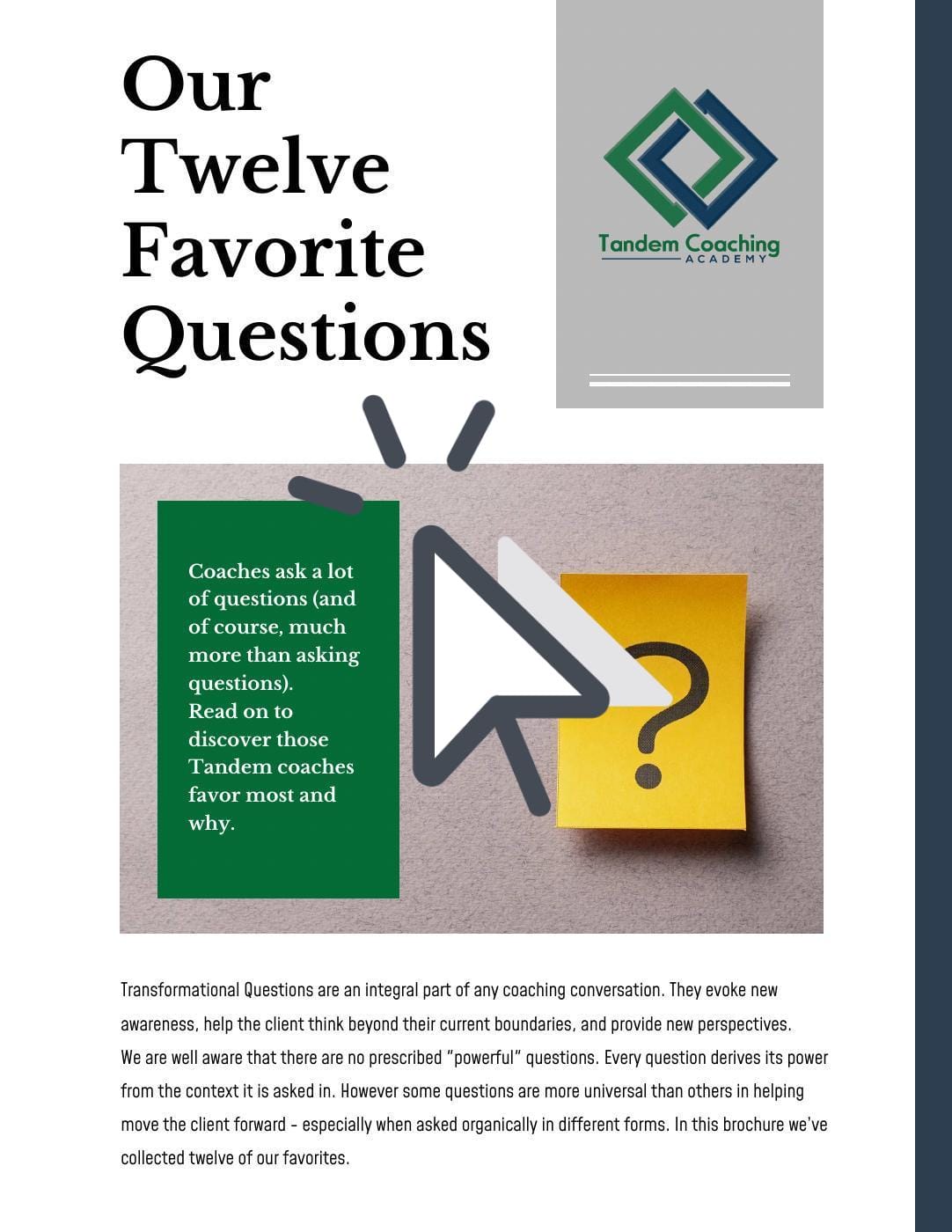The Best Agile Articles book series collects the best agile articles published during a calendar year into a single volume.
On April 6 the authors of the best agile articles published in 2018 came together for a workshop, giving their talk on topics such as Agile Leadership, distributed teams, and others.
Today Tandem Coaching Academy publishes the talk Elena Vassilieva gave during the workshop on the topic of Virtual Reality and Agile Coaching.
Tandem Coaching Blog - Page 3
Agile Coaching
The Best Agile Articles book series collects the best agile articles published during a calendar year into a single volume.
On April 6 the authors of the best agile articles published in 2018 came together for a workshop, giving their talk on topics such as Agile Leadership, distributed teams, and others.
Today Tandem Coaching Academy publishes the talk Roman Pichler gave during the workshop on the topic of managing and dealing with the stakeholders.
Ask any Agile practitioner these days what Agile values are and he, most likely, will recite you some lines from the Manifesto for Agile Software Development. Ask him the final line of the said Manifesto and the result might be quite different, but I digress right in the first paragraph.
Ask a Scrum practitioner and he’ll give you 3-4, maybe 5, if he’s real good, values Scrum holds dear.
Next ask a different question, “What ARE the values? What are we talking about here?” And you’ll be lucky if you hear a half-baked off-the-cuff answer. Sometimes it’s just like, “well, values are values, those are what’s valuable.” Duh…
A quite interesting viewpoint and a crisp definition comes from Mark Manson’s “Subtle Art of not Giving a F*ck”.
I call on the Scrum and the larger Agile community to correct our messaging while we walk the continual path of tackling hard problems. Be less dogmatic. Think Agile. Be more like water and Scrum On!
In the previous 3 articles I reviewed some of the most important Agile metrics that Dan Vacanti’s ActionableAgile software helps you to get with ease. Those were Cycle Time with the help of the Cycle Time Scatterplot, and a multitude of metrics, provided by the Cumulative Flow Diagram (CFD). In the latest article we looked at Work Item Age and its importance with the help of Aging Work in Progress Diagram.Looking at the Cycle Time Scatterplot we discussed the significance of percentiles and how they can be used to predict the cycle time and avoid the trap of a single-number, point-in-time answer. This is cool, you’d say, but not merely enough, and I would agree. We need better techniques to predict possible timeframes for a completion of a set of work items. And, sometimes, we need to know how many right-sized work items can be completed within a given time frame.Let’s face it, we live in a real world, where “When Will It Be Done question” is as omnipresent as ever. We cannot bury our heads into the sands of the #NoEstimates beach and hope the questions will go away. Let’s learn better ways to answer those questions.
Discover the keys to optimizing workflow with the Aging Work in Progress chart. Learn how to interpret team productivity and efficiency insights for better outcomes.
This question "What is the duration of a Sprint" is seemingly simple, but depending on the interviewing situation, company, interviewer, and their familiarity with Scrum you might need to give them more or less details and answer additional questions your answer might bring up.
In the first part of Getting to 85 – Agile Metrics with ActionableAgile we looked at the Cycle Time Scatterplot as generated by ActionableAgile software. That piece also discussed some ideas the scatter plot could bring about and conversations that potentially might occur.Let’s take a look at another important chart and set of metrics the ActionableAgile can produce based on sample or custom loaded data – Cumulative Flow Diagram (CFD).
Dive into the world of Agile Metrics, spotlighting Cycle Time's crucial role in Scrum and Kanban integration. Discover how embracing this often-overlooked metric can lead to significant gains in predictability and efficiency. This article marks the beginning of a series, aiming to demystify Agile measurements and their practical applications for today's dynamic project management landscapes.
Information Radiators are a great way to make things transparent for a team or organization. The radiator pictured above I a sprint health radiator. It can be used however you choose to implement and using whatever colors you select. I just happened to be using a white board and green, blue, and red dry erase markers when I created the one pictured above.You could also make this smaller on a flip chart and create a new one daily to show progress over time which is really cool because the team can see how far they’ve come each day. It also shows them when new work is added to the sprint or when things are not moving along as expected. Take care to ensure that this information radiator is used to display and radiate information that is useful to the team to see the health of the sprint and make decisions about changes they might need to make in the way they are working. Don’t use this as a whipping stick to prod the team to work harder, faster, or more recklessly!Let me give a description of the radiator parts, options, and how it’s used.

Take your Agile Coaching Skills to the next level with our Professional Coaching Training

Unlock Exclusive Coaching Insights!
Enjoyed our insights on professional coaching? We’re just scratching the surface. Dive deeper into the world of transformative coaching with our exclusive offer. Sign up now to receive our FREE brochure: “Our Twelve Favorite Coaching Questions”—a curated collection of powerful questions designed to unlock potential, foster growth, and inspire action.
"*" indicates required fields













